Bamboo is a fast-growing, versatile, and sustainable resource used for centuries in Asia for everything from building materials to food. In recent years, bamboo has become popular in the Western world, with people using it for everything from furniture to flooring. However, bamboo farming is a relatively new industry in the United States. Still, it has excellent potential as a source of income for farmers and a sustainable way to produce bamboo products.
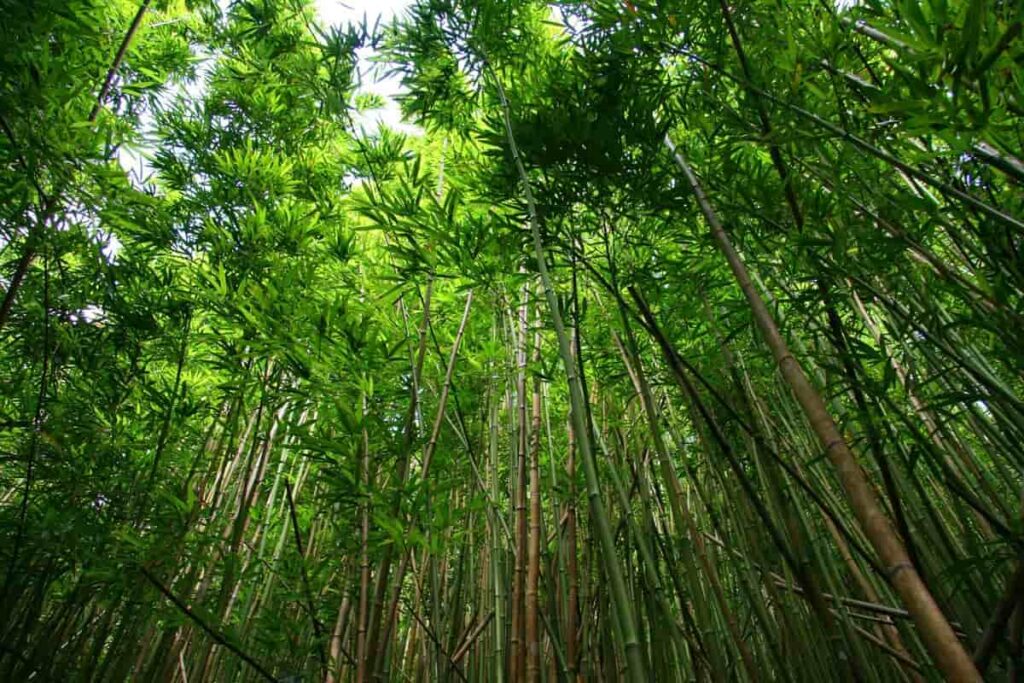
In addition, bamboo can be grown in various climates and soil types, making it a viable option for farmers in many regions. There are two main types of bamboo farming: plantation forestry and small-scale farming. Plantation forestry is the more industrial approach involving planting large tracts of land with a single species of bamboo.
This type of farming is typically used to produce wood products such as flooring or furniture. Small-scale bamboo farming is a more traditional approach that is often used to produce food or material for handicrafts. Farmers typically grow several varieties of bamboo in smaller plots of land in this type of farming. The different varieties are often interspersed with other plants, such as vegetables or fruit trees.
No matter what type of bamboo farming you choose, there are some basic steps that you need to follow to be successful. These steps include selecting the right location, preparing the soil, planting the bamboo, and caring for your crop. This blog post will cover the cultivation practices and the bamboo farming business plan.
Bamboo farming business plan
Advantages of a bamboo farming business
Bamboo farming has recently gained popularity as a sustainable and eco-friendly agricultural option. Bamboo is versatile for various purposes, including construction, paper production, and furniture making. Bamboo farming offers several advantages over traditional farming practices. Bamboo is a fast-growing plant, meaning farmers can harvest it more frequently than other crops.
In case you missed it: How to Design a Bamboo Garden: Ideas for Layout and Planting from Cuttings
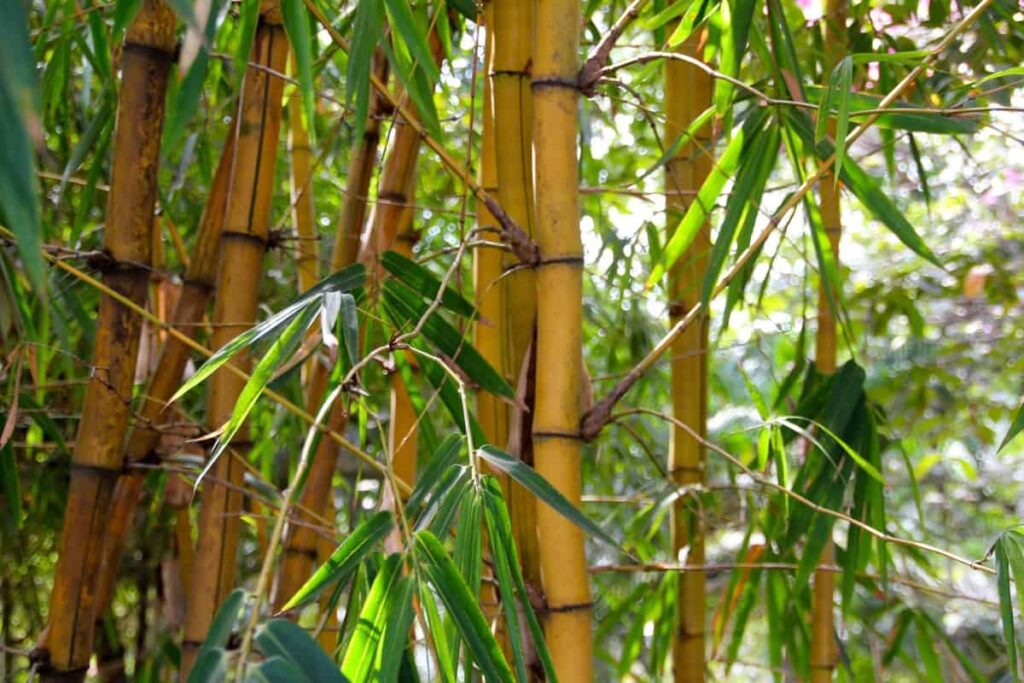
It also requires less water and fertilizer than other crops, making it an environmentally friendly option. Bamboo is also pest-resistant, meaning farmers don’t have to use harmful pesticides to protect their crops. Bamboo farming offers farmers a sustainable and eco-friendly agricultural option that can be used to create a variety of products.
Bamboo farming business plan
Bamboo farming can be a lucrative and sustainable business venture. You can set up a successful bamboo farm with proper planning and execution that provides a steady income stream. To get started, you’ll need to develop a business plan. This should include a detailed analysis of the costs, revenue potential, and risks involved in starting and running a bamboo farm.
You’ll also need to identify your target market and develop a marketing strategy. Once you have your business plan, you can start sourcing bamboo seedlings or cuttings from nurseries or suppliers. To maximize your chances of success, choosing the suitable bamboo species for your climate and soil type is important.
Once you have your plants, you’ll need to prepare the land and build any necessary infrastructure, such as fencing and irrigation systems. Your bamboo farm can thrive for many years with proper care and management. Regular harvesting and maintenance will be necessary to keep the plants healthy and productive. Then, you can generate a healthy return on investment by selling bamboo poles or products made from them.
How to prepare the soil for bamboo farming
To prepare the soil for bamboo farming, it is important first to test the soil to see what nutrients it is lacking. Once you know what nutrients are needed, you can add them to the soil through composting or other means. The next step is to till the soil so that it is loose and aerated. Bamboo roots need room to grow, so it is important to ensure the soil is intact. Finally, you will need to water the soil thoroughly before planting bamboo.
Bamboo requires a good amount of nitrogen to grow quickly and reach its full potential. Bamboo roots can penetrate deep into the ground, so it is important to loosen the topsoil to a depth of at least 1 meter. You should also add some limestone to help balance the pH of the soil. Finally, adding compost and manure to the soil before planting can prevent nutrient deficiencies in bamboo farming.
In case you missed it: Farming Business Plan PDF: for Poultry, Livestock, Agriculture, Horticulture, Greenhouse, and Hydroponic
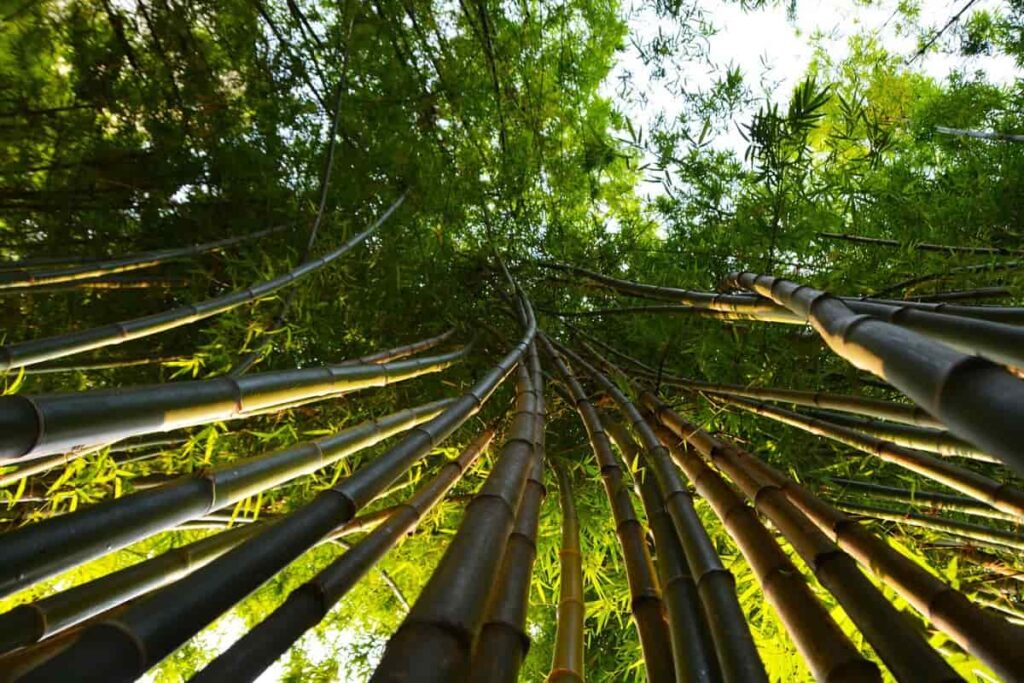
Climate requirement for bamboo farming
Bamboo is a tropical and subtropical grass that is found in many different climates throughout the world. In general, bamboo prefers warm, moist conditions with plenty of rainfall. However, some species can tolerate colder temperatures and drought conditions. Therefore, when considering climate requirements for bamboo farming, it is important to know which species of bamboo you are planning to grow.
Some species are more tolerant of different conditions than others. For example, Phyllostachys edulis is a type of bamboo native to China and can tolerate temperatures as low as -15 degrees Celsius. However, other species, such as Bambusa vulgaris, can only tolerate temperatures above 15 degrees Celsius. ITherefore, it is also vital to consider the amount of rainfall in the area where you plan to grow bamboo.
Bamboo requires a lot of water, so an area with high rainfall is ideal. However, some species can tolerate drier conditions if given enough irrigation. When choosing a location for your bamboo farm, it is important to consider the climate requirements of the specific species of bamboo you want to grow. Proper planning allows you to find a location that will provide the ideal conditions for your bamboo to thrive.
Best time to plant bamboo crop
Bamboo is a versatile and sustainable crop grown in various climates. The best time to plant bamboo depends on the climate zone in which you live. In case you live in a tropical or subtropical climate, the best time to plant bamboo is during the rainy season. Bamboo loves moisture, so planting during this time will help your crop thrive. On the other hand, the best time to plant bamboo is spring or fall if you live in a temperate climate.
These seasons offer moderate temperatures and adequate rainfall, ideal for bamboo growth. No matter what climate you live in, choose a planting site with well-drained soil and full sun exposure. Bamboo roots are shallow, so they need plenty of sunlight to reach deep into the soil.
Bamboo verities/types
There are many different types of bamboo, each with unique characteristics. Here are some of the most popular varieties:
- Moso bamboo is the most common bamboo used in construction and furniture making. It is also one of the strongest varieties, with a high tensile strength, making it ideal for structural applications.
- Phyllostachys bamboo is another popular type of bamboo and is often used in landscaping and as ornamental plants. This variety is known for its tall, straight stalks and beautiful leaves.
- Fargesia bamboo is a more delicate variety often used in garden settings. It is known for its graceful arching stalks and lush foliage.
- Bambusa bamboo is a tropical variety commonly used in basketry and other crafts. It has a distinctive striped appearance and can be found in various colors.
In case you missed it: Vertical Farming Business Plan in India: Crops, Subsidies, Companies, Cost, and Profits
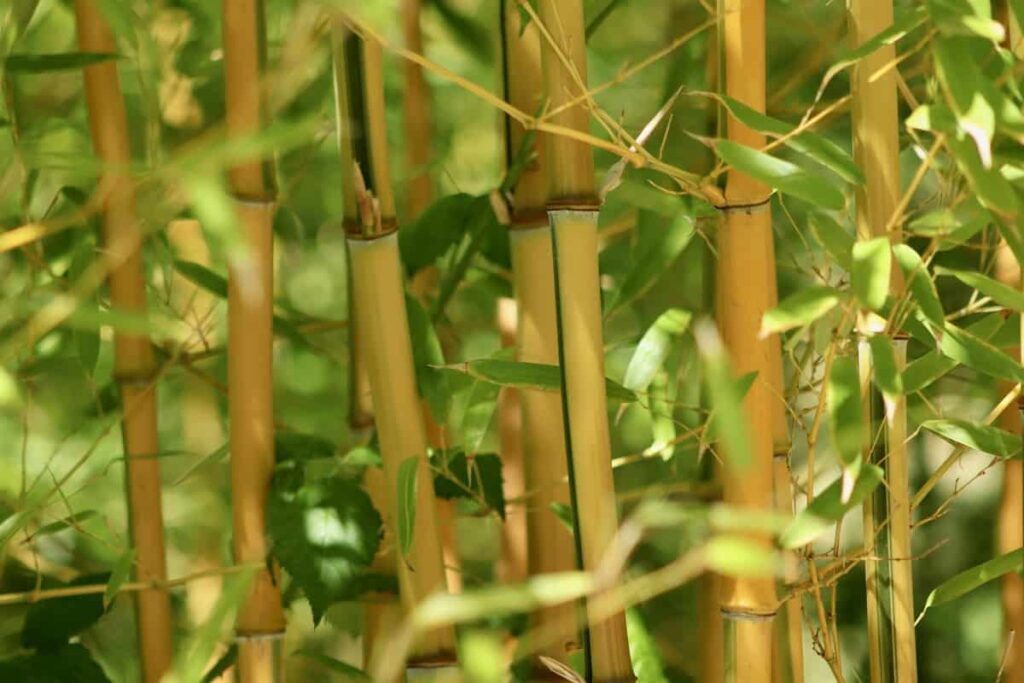
Propagation in bamboo farming
Bamboo is propagated by rhizome cuttings or by seed. Rhizome cuttings are the most common propagation method, as it is the easiest and quickest way to produce new plants. To propagate by rhizome cuttings, cut a section of rhizome with at least two nodes (joints) and plant it in moist soil. The cutting will sprout new shoots within a few weeks.
To propagate bamboo by seed, sow the seeds in moist soil in spring or early summer. The seeds will germinate within a few weeks. Once the seedlings are large enough to handle, transplant them into individual pots and grow them until they are big enough to plant out in their permanent positions.
Where to purchase bamboo rhizome cuttings/seeds?
There are many places you can purchase bamboo rhizome cuttings or seeds. Here are some places to check out:
- Online nurseries – Many online nurseries sell bamboo plants. Do a quick search online to find one in your area.
- Local garden centers – Many local garden centers carry bamboo plants. Call ahead to see if they have what you’re looking for in stock.
- Mail-order catalogs – Several mail-order catalogs sell bamboo plants. Browse a few and see if they have what you’re looking for.
- Asian markets – If you have an Asian market nearby, they may sell bamboo plants. This is a good option if you’re looking for a specific type of bamboo plant.
- Direct from growers – You can purchase bamboo plants directly from growers. This option is preferred if you want to buy in bulk or are looking for a rarer type of bamboo plant.
Sowing process in bamboo farming
Rhizome cuttings can propagate new bamboo plants and are a standard method of bamboo propagation in many parts of the world. When sowing rhizome cuttings, choosing a well-drained spot in your garden or farm where the cutting can be placed is important. The site should also receive plenty of sunlight.
Once you have chosen a location, dig a large enough hole to accommodate the rhizome cutting. Place the rhizome cutting in the hole and then backfill the hole with soil. Next, water the planting area well and keep it moist until new growth appears. Once new growth appears, you can reduce watering and allow the bamboo plant to become established.
Mulching your bamboo plants
Mulching your bamboo plants is important in maintaining a healthy bamboo stand. By mulching, you will help to prevent weeds from growing and competing with your bamboo for resources. Additionally, mulching will help to retain moisture in the soil and protect the roots of your bamboo from extreme temperatures.
Many materials can be used for mulching, including straw, wood chips, and leaves. Whatever material you choose, cover the entire root zone of your bamboo plants with a layer of at least 2 to 3 inches thick.
In case you missed it: Tips to Start a Goat Farming Business: Check How this Guide Helps Beginners
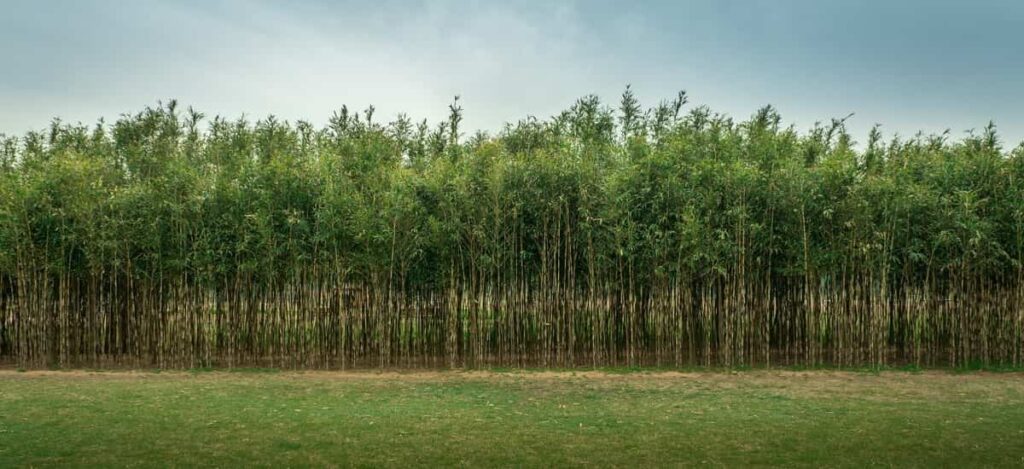
Bamboo transplanting and spacing
Bamboo transplanting and spacing are important parts of bamboo cultivation. Proper spacing ensures that the bamboo plants have enough room to grow and spread. Bamboo plants can be transplanted by dividing the root ball or rhizome cuttings. When transplanting bamboo, choosing a site with well-drained soil and full sun is important.
The bamboo plant should be transplanted in the spring or fall. When transplanting by the root ball, the plant should be placed in the hole, so the roots are covered with soil. When transplanting by rhizome cuttings, the rhizomes should be buried in moist soil. After transplanting, the bamboo plants should be spaced 4 to 6 feet apart. They can be spaced closer together if they are being grown for privacy or windbreaks.
How to thin your bamboo plants?
Bamboo plants are notorious for their ability to spread rapidly and take over gardens. While this rapid growth can be an advantage in some cases, in others, it can be a nuisance. If you find yourself with more bamboo than you know what to do with, thinning out your plants is an excellent way to control their growth.
Thinning bamboo plants is a simple process that can be done with a sharp knife or pruning shears. First, cut away any dead or dying leaves or stems and any crossing or rubbing against each other. You should also remove any shoots coming up outside the desired area.
How to care for bamboo plants?
Bamboo farming is a relatively simple process, but some important things must be remembered to ensure a successful bamboo harvest. First, bamboo is a fast-growing crop, so regularly check the plants for pests and diseases. Second, bamboo is also susceptible to wind damage, so it is important to choose a site for farming sheltered from strong winds.
Third, irrigation is important for bamboo care, as the plants need a consistent water supply. However, bamboo does not like soggy soil, so it is important to ensure that the irrigation system does not overwater the plants. Fourth, fertilization is also important for healthy bamboo growth.
However, too much fertilizer can harm plants. Finally, weeding is another crucial part of bamboo care. Bamboo has shallow roots and competes poorly with other plants for resources. As such, keeping the area around the bamboo plants free of weeds is important to give the bamboo the best chance to thrive.
Best fertilizers for your bamboo crop
Bamboo is a fast-growing crop that can provide farmers with a sustainable source of income. However, bamboo requires high amounts of nutrients to grow well. The best fertilizers for bamboo include organic matter, such as compost or manure, and inorganic fertilizers, such as urea or ammonium sulfate. Organic matter provides essential nutrients for bamboo, improving soil structure and increasing water retention.
Inorganic fertilizers are typically used to supplement the nutrient needs of bamboo. Urea and ammonium sulfate are two common inorganic fertilizers used on bamboo crops. Both organic and inorganic fertilizers are essential for ensuring the healthy growth of bamboo. Bamboo farmers should consult with a local extension agent or experts to determine the best fertilizer regime for their bamboo crop.
When and how to water bamboo crops?
To keep your bamboo healthy, it is essential to water it regularly. However, over-watering can also be detrimental to the health of your bamboo. Here are some tips and ideas on when and how to water your bamboo crop:
- Water your bamboo early in the morning or late in the evening to avoid evaporation.
- When watering, apply the water evenly across the entire root system.
- Do not water too frequently
- allow the soil to dry out somewhat between watering.
- In hot weather, you may need to water your bamboo twice daily.
- If possible, use rainwater or filtered water for your bamboo, as chlorine and other chemicals in tap water can damage delicate roots.
In case you missed it: Terrace Gardening ideas for Home in India: For Vegetables, Fruits, Flowers, and Herbs
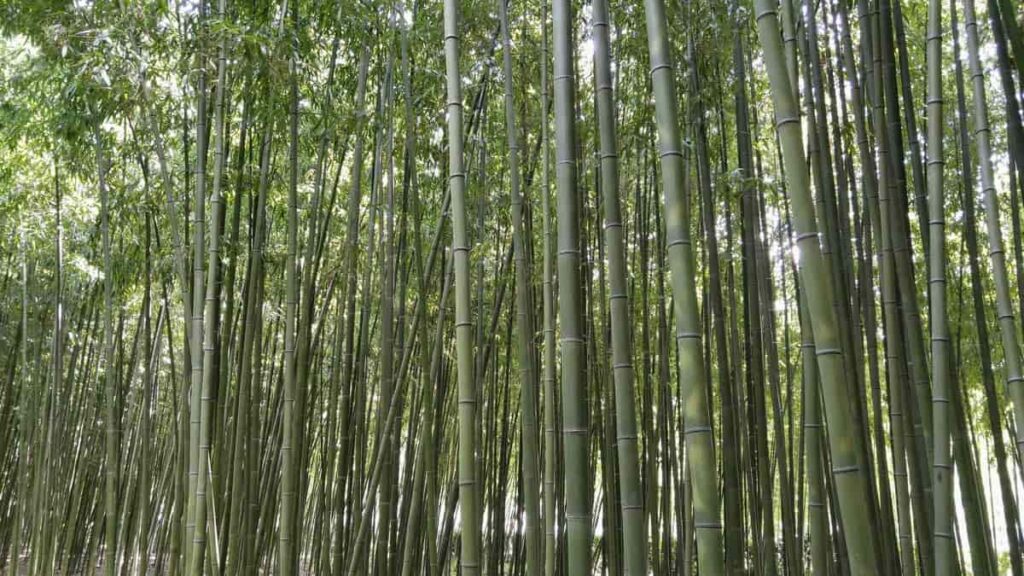
How to control weeds in the bamboo farm?
Weeds are a common problem in bamboo farms, and they can compete with bamboo for water and nutrients. You can do a few things to control weeds in your bamboo farm:
- Hand-pulling: This is the most labor-intensive method, but it’s also the most effective. You’ll need to pull up the weeds regularly before they can go to seed.
- Mulching: Spread a layer of mulch around the base of the bamboo plants. This will help to prevent weeds from germinating.
- Herbicides: You can use herbicides to control weeds, but be careful not to damage the bamboo plants. Select an herbicide that is specifically labeled for use around bamboo.
- Cover Crops: Planting cover crops can help to suppress weed growth. Cover crops can be mowed or turned under before they go to seed, which will help to prevent them from becoming a weed problem in your bamboo farm.
Pests, diseases, and their control in bamboo farming
Bamboo is a hardy plant that can withstand many pests and diseases, but a few can cause serious problems. Here are some common bamboo pests and diseases and how to control them. Pests Aphids are small, soft-bodied insects that suck the sap from bamboo plants and can cause stunted growth and yellowing of the bamboo leaves. To control aphids, use an insecticidal soap or neem oil.
Mealybugs are small, white insects that suck the sap from bamboo plants and can cause stunted growth and yellowing of the leaves. To control mealybugs, use an insecticidal soap or neem oil. Thrips are tiny (small), winged insects that feed on the leaves of plants. They can cause distorted growth and silvering of the leaves. To control thrips, use an insecticidal soap or neem oil.
Diseases Bamboo blight is a fungal disease that causes black spots on the leaves and stalks of bamboo. It can eventually kill the plant if left unchecked. To control bamboo blight, use a fungicide such as copper sulfate or mancozeb. Powdery mildew is a fungal disease and causes white powdery patches on bamboo leaves. It can eventually kill the plant if left unchecked. To control powdery mildew, use a fungicide such as sulfur or mancozeb.
When and how to harvest bamboo?
There are two main types of bamboo – those that grow in temperate climates and those that grow in tropical climates. The former are typically harvested in late summer or early fall, while the latter are usually harvested in late winter or early spring. Therefore, the first step in harvesting bamboo is to identify which type of bamboo you have. Once you know what kind of bamboo you’re dealing with, you can determine the best time to harvest it.
Consult a local nursery or gardening center to help choose the best time to harvest your bamboo. They should be able to guide you based on your specific type of bamboo. Once you’ve determined when to harvest your bamboo, the next step is to cut it down. It would help if you had a sharp saw or hatchet for this task. Make sure to cut the bamboo at least 2 to 3 feet above ground level so new shoots can grow back in their place.
After cutting down the bamboo, you can remove the culms (the hollow, woody stems) from the rest of the plant. These can be used for various purposes, such as making baskets or furniture. Once you’ve harvested your bamboo, it’s important to cure it properly before using it. This involves drying it out slowly, so it doesn’t crack or split.
Bamboo yield per acre
In terms of bamboo yield per acre, it is difficult to generalize since this varies greatly depending on the species of bamboo, the age of the plantation, and growing conditions. However, a conservative estimate would be between 15-25 tons per acre annually for a well-managed plantation. With such a high yield potential, bamboo is an excellent crop for small farmers and large commercial operations. Happy farming.
- Profitable Village Farming Business Ideas in 2024
- High-Yield Aquaculture: Fast-Growing Fish for Farming
- Effective Fish Pond Construction Techniques for Beginners
- Irrigation and Water Management in Pineapple Farming
- Blossom to Harvest: Mastering Flowering and Pollination in Papaya Farming
- Pig Fattening Essentials: From Selection to Sale for Beginners
- Raising Wagyu Cattle: A Complete Guide for Premium Beef Production
- Soil Types and Their Water Holding Capacity
- Optimizing Irrigation Schedules for Coconut Groves for Enhanced Yield
- Espresso Your Garden: Coffee Grounds for Healthier Acid-Loving Plants
- The Best Soil Mix for Snake Plants: How to Mix Your Own Snake Plant Soil
- Green Thumb Success: Expert Tips for Cultivating Greenhouse Beans All Year Round
- Bloom All Year Round: The Ultimate Guide to Indoor Hyacinth Care
- Eco-Friendly Gardening: How to Make Liquid Fertilizer from Kitchen Waste
- Ultimate Guide to Grow Anise in Pots: Explore Seed Propagation to Harvesting
- Guide to Raising Chester White Pigs: Discover Breed Facts to Growth Management
- Mastering the Elegance: The Ultimate Guide to Weeping Cherry Tree Care, Planting, and Maintenance
- Ultimate Guide to Planting Garlic in Grow Bags: Growing Strategies for Beginners
- How to Fix Spider Plant Leaf-Related Problems: Natural and Organic Remedies
- 10 Reasons Why Your Tulsi Plant is Shedding Leaves: Home Remedies and Solutions
- Optimizing Growth and Yield: The Advantages of Palm Bunch Ash Fertilizer
- Utilizing Neem Oil Extract as a Natural Pesticide for Hydrangea
- From Soil to Harvest: Various Ways in Which Farmers Can Use AI Tools
- Steps to Encourage and Induce Citrus Flowers: A Comprehensive Guide
- How to Fix Snake Plant Leaf-Related Issues: Natural and Organic Remedies
- Transform Your Garden into a Fragrant Oasis with Raat Ki Rani (Night Blooming Jasmine)
- Discover the Ideal Chicken Breeds for Philippine Farms
- How to Create a Poultry Egg Farm Business Plan for Profits
- Grow Lemon Cucumbers Like a Pro: Insider Techniques for Bountiful Yields
- Ultimate Guide to Caring for Your Pink Princess Philodendron: Tips for Thriving Variegation
- Areca Nut Profit Per Acre: Calculating Yield and Cost of Cultivation
- How Kaveri Chicken is Becoming a More Profitable Breed in Indian Backyards
- Transform Your Barn: 9 Steps to Convert a Horse Stall into a Chicken Coop
- Exploring Suffolk Sheep Disadvantages with Limitations and Challenges
- Guide to Solving Potted Lemon Tree Problems: How to Revive Lemon Tree in Containers
- Steps to Encourage Female Pumpkin Flowers: Best Strategies for More Flowers and High Yields
